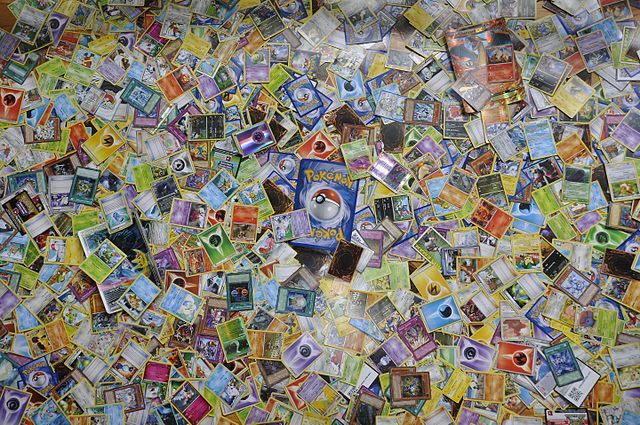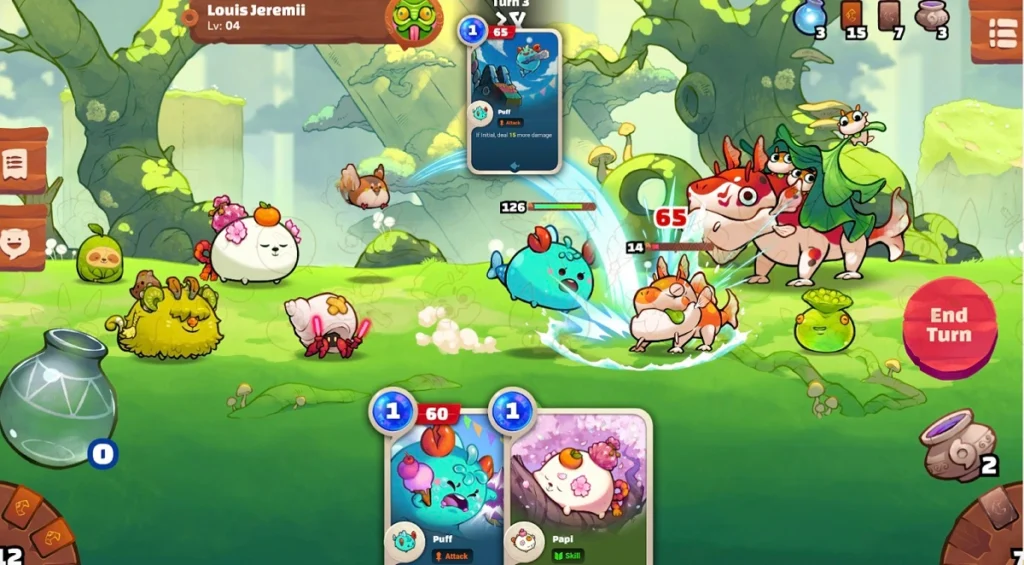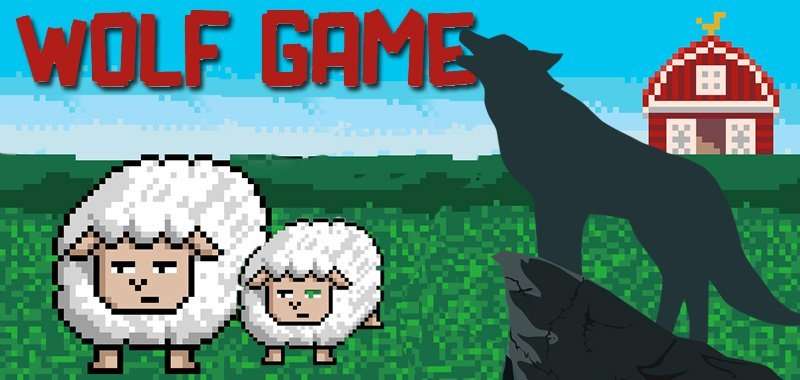A lot of companies have talked about the idea of implementing NFTs in Video Games. Other blockchain technologies have similarly been considered.
Ubisoft has attempted to put them into their game Ghost Recon Breakpoint.
Konami celebrated the 35th anniversary of their legendary Castlevania franchise with a collection of NFTs rather than a new game that people have been wanting.
SquareEnix has started selling several of its western studios and IP in an attempt to go all in on blockchain technolog, to the point of targeting players who “play to contribute” rather than “play to have fun”.
The International Olympic Committee even abandoned its very profitable partnership with Nintendo and Sega which had made the Mario & Sonic at the Olympic Games series in order to pursue NFTs and esports.
Sega has gone both ways on the technology, initially saying that the “future of gaming” would include NFTs. They would then abandon those plans, with Sega operating officer Shuji Utsumi saying that “the action in play-to-earn games is boring” and “What’s the point if games are no fun?”
There are even entire games like Axie Infinity have been built around trading and battling NFT-based creatures that are built entirely around the concept of NFTs in video games. We’ll be discussing those sorts of games here a fair amount.

While there are a lot of concerns over the total commodification of what should be fun, as well as the response that players have had thus far to said commodification, game developers may be wondering how they can work NFTs and blockchain technology into their games, or if they even should.
There are some very dangerous legal challenges to integrating NFTs into video games. We’ll take a look at just a few of these legal hurdles (as there are MANY legal and practical problems with NFTs with more appearing every single day) through the specific lens of blockchain in games.
However, a disclaimer before we get started. I am an attorney. I am not a psychic. Sadly, I cannot see the future. As such, I’m writing this post not from the perspective of what technology will become and what the law will become to match it, but from the perspective of how technology is now and what the law currently is. Things could change legally and in terms of the application of the underlying technology of blockchain, so we can only discuss how things currently are legally and technologically.
With that out of the way, let’s talk about NFTs in gaming.
What is an NFT?
There’s a lot of misunderstanding about what an NFT is, even among enthusiasts. For their part, there has been no attempt by any regulatory body to define what an NFT is nor what rights it confers. Even within the same blockchain system, two different NFT sales can confer very different rights.
An NFT is simply an entry on a blockchain that represents a token. A blockchain is a series of transactions that are stored on a decentralized ledger. How that ledger functionally works is beyond the scope of this post and is better explained elsewhere as it has little bearing on the legal implications of the transaction, but it is sufficient to say that when you purchase an NFT, you are purchasing a receipt that shows that there was a transaction that granted the token to you.
“NFT” stands for Non-Fungible Token. Something is fungible if it is interchangeable. Money is a great example of this. If you and I trade dollar bills of the same denomination, we’re in the same position. Money is therefore fungible. On the other hand, if we trade collectible cards or something else that’s unique, the trade does not put us in the same positions, since those items are unique.
Since each token in an NFT is theoretically unique, they are said to be non-fungible. An NFT is simply a unique token that can be passed through transactions on a decentralized ledger.

NFTs are not digital art. They are not a sign of ownership on their own. This is where some confusion happens. NFTs can have associated “smart contracts”1 on the blockchain, that can have bits of data stored on them. Since blockchain technology is inherently inefficient by design, this bit of data has to be fairly small. An NFT could have a link to an image stored elsewhere, though the actual image will be significantly more difficult to store on the blockchain, so the image (or other asset) is typically stored elsewhere.
This is where the misconception of digital ownership comes from; there is an image or other asset associated with a particular token, but ownership of that image is a much more complicated question.
There’s a lot that could be said about how they work, but it’s enough for now to say that an NFT is simply a non-fungible entry on a decentralized blockchain with a bit of data associated with it to make it unique.
How are NFTs Being Used in Video Games?
NFTs are still finding their place,2 if any, in video games.
Right now it is difficult to say what purpose they can or will serve in the future. While smart contracts are essentially just bits of code that run on the blockchain, games actually running on the blockchain aren’t the primary use case (though it has been tried, with some problems we’ll touch on below).

Generally speaking, it’s far more common for a game to integrate NFTs by tying an in-game asset to a token on the blockchain. This could be a cosmetic item, such as a skin for a character or weapon, or even a functional item or character within the game like in Axie Infinity, where the titular “Axies” are creatures that can be bred, traded, and battled as one would with a Pokemon, but with information about each creature stored on a blockchain instead of on a player’s hard drive or on a server hosted by the developer.
This is often associated with a “play to earn” model, where a player can (allegedly) earn money by playing the game through the sale of these in-game assets which are earned through play. It has also led to terrible takes like a Bloomberg author proposing the idea of Mario as an NFT, something that fundamentally misunderstands economics, good game design, game balance, the idea that people play games to have fun, and Mario Kart.
However, while some publishers are still figuring out how to integrate NFTs and blockchain into their games, there are some legal problems that developers should be wary of. Here we’ll go over a few of these potential pitfalls.
Questionable Ownership Issues with NFTs
In spite of a rush of publishers to integrate blockchain technology into their games, there really isn’t a standard for what ownership rights are granted when a consumer purchases an NFT.
Property rights are often compared to a bundle of sticks, which allows for the sale or transfer of individual sticks from the bundle as separate rights. Despite the promise of “digital ownership”, what is actually being transferred when an NFT is purchased is unclear, and will vary based on the end user license agreement of the specific NFT platform or project.
On their own, all that is being purchased when somebody buys an NFT is a receipt stored on a blockchain that indicates that they made the purchase. There isn’t any inherent use to the NFT alone. Adding NFTs to video games attempts to solve this by tying an in-game asset to the entry on the blockchain ledger, though it is not without its own issues.

This can lead to some issues with false advertising when something is promised but differs from the actual rights granted. A great example of this can be seen in the NBA Topshots program. Originally sold under the idea of “owning a moment,” they changed their marketing language to “scoring” an NFT, which better reflects the limited license to use a clip within their Topshots website, rather than ownership of the copyright of the actual video clip.
Of course, this all also leads to consumer issues if you finally shut down your game’s servers. While proponents of blockchain ownership will argue that you still own your assets long after the game shuts down, the reality is that what gives the item value and utility – the game – no longer exists. You don’t want to be liable for deceiving customers when the value of the asset disappears because it’s no longer viable to keep servers running.
Developers considering adding the promise of ownership of assets of any form – particularly those on a blockchain – should be wary of what they are promising in their advertising and in game.
Intellectual Property Issues with NFTs in Video Games
Relating to this issue, developers need to take extra caution if any of the NFTs that are offered in their game contain any of their own intellectual property. The end-use license agreement should be very explicit about laying out exactly what rights in the underlying IP are being licensed to the user to avoid any potential confusion about what exactly the player “owns”. Transferring IP that is being used in a game to the players creates a lot of potential problems for a publisher, to say the least, so players should be very aware of what they’re actually buying.
Additionally, as in every case when using someone else’s intellectual property, a license should be obtained that clearly states that the use of the IP as an NFT is licensed. While the question of whether or not minting an NFT related to an existing work is an unsettled question of infringement, the use of such an NFT in a game (or the use of any copyrighted material without a license) is almost certainly infringement, so developers should remain very wary of using any non-licensed works as NFTs. HitPiece ran into issues with this for selling NFTs based on music without permission from the artists.
If the NFT represents an asset or item that is based on existing intellectual property, including brands or copyrighted characters, you may need a license from the intellectual property owner.
Are NFTs in Video Games Securities?
There is a question as to whether or not NFTs are securities. If they are, then a game developer adding them to their game may be subject to securities regulation. A recent decision involving NBA Top Shots would indicate that the law may be headed in that direction. While this may not be entirely bad, it introduces new potential legal issues that developers must then grapple with.
Courts generally use the Howey Test to determine whether transactions qualify as “investment contracts”. If they meet this test, then the transaction is considered a security and is subject to disclosure and registration requirements like any other security. Under the Howey Test, a transaction is an investment contract if it is (1) an investment of money in (2) a common enterprise with (3) the expectation of profit (4) to be derived from the efforts of others.
Do NFTs meet this test? That’s a good question for courts to decide.
If NFTs are considered a security (and there is a lot of debate on either side of the issue, much of which depends on how and why people are buying NFTs in the first place), then developers implementing NFTs in their games will have to take great care not to violate security regulations. Developers would be wise to make sure that players understand that they are not buying these NFTs with an expectation of profit, but purely for the utility that they offer within the game.
Being aware of and complying with securities law is esepcially important as this space develops, as the SEC has started charging people involved with blockchain and crypto as selling securities, including recent charges against Lindsay Lohan, Jake Paul, Soulja Boy, and others. These criminal charges are becoming more common, so it’s best to be cautious and stay compliant with regulations.
For their part, the ESRB has begun labeling games with “play to earn” elements as AO or Adults Only, making them unsuitable for younger audiences presumably due to their relation to gambling. This led the game Gods Unchained to be removed from the Epic Games store only to later be reinstated after Epic Games changed their policy to allow AO-rated games if they get the rating only because of their blockchain elements rather than because of sexual content.
In addition to this, the sale of NFTs may be subject to taxation. Developers should be aware of this and any locally applicable tax laws. While taxes are something that every developer should already be aware of, the downstream sale of NFTs from one consumer or player to another and in turn generating income is a unique tax situation that most developers and consumers may not be aware of, or be prepared to handle.
The Securities and Exchange Commission (SEC) has not yet issued any opinion or regulation as to whether NFTs are securities, though it’s likely that it will make a decision or that a case will force courts to define NFTs as securities or commodities. Either way, developers should be aware that this may bring new regulations that they will have to comply with.
Problems Created by the Immutability of the Blockchain when Patching Content
The reality is that in the current era of digital games patches and updates are inevitable. Show me a person who claims you can release a game totally bug-free or without any balance issues whatsoever and I’ll show you someone who’s never worked on a game before. It’s just not reasonable to expect to make a perfectly balanced game, especially not without patching things.
While changing the stats of a particular faction or unit in a strategy game or a certain character in a fighting game for the sake of a more balanced game has no legal problems on its own, problems can quickly emerge when the things that you’re balancing are “owned” by individuals. This can quickly lead to consumer protection issues, as what is being sold is then modified after the fact.
Developers should make their terms of service very clear about what is being licensed to the user to avoid consumer protection issues when something is sold, “owned” by a player, and then subsequently has its stats changed – otherwise balancing your game will become a legal nightmare since you now have to change the properties of things “owned” by players.

The fact that the blockchain is immutable, or rather that it can’t be changed, is an even bigger problem for games that are played entirely on the blockchain through smart contracts.
If the developer ever wants to (or has to) change something about the game for balance or to patch an exploit or security flaw, the only way to do so is to fork to a new ledger and redeploy all existing tokens, effectively recreating the entire game. This is not an ideal situation to be in for any developer of a multiplayer experience.
Compounding this is the issue of cheaters. It is one thing to cheat in an online game where the most that is at stake is a rank, but the issues become far worse when you have the incentives of earning digital assets.
This was a problem for Yuga Labs, who immediately ran into issues with widespread cheating in its Dookey Dash tournament, despite a major strength of crypto purporting to be verification without needing to trust.
When giving away any sort of prize, particularly one that claims to be worth real-world money, you need to be extra cautious that the contest is fair to minimize potential liability.
Conclusion
NFTs are still searching for a place in gaming. I’ll likely do a follow-up with some more potential pitfalls of blockchain technology to be aware of in video games as things develop. There’s certainly a lot of bad legal takes and poorly executed projects to talk about.
For now, just know that there’s a lot to be wary of largely because the space hasn’t been regulated heavily yet and the applications for the technology are still being tried.
There is also no shortage of stories surrounding NFTs being outright scams, including prominent ones like buyers suing the creators of the Bore Ape Yacht Club NFTs over intentionally misrepresenting the price of the NFTs, among many many other similar stories.
I have repeatedly said that you need to remain honest with your players, such as when creating trailers, adding loot boxes or similar monetization, working with influencers, and many other situations. The NFT landscape being so full of scams and rug pulls makes it very hard to be an honest game developer in the space, or to maintain an honest reputation even if you actually are being honest.
While the underlying technology may have a use case in video games, it’s still a bit of an uncertain space to be entering, in spite of what certain publishers would suggest. Developers should be very careful not to be too hasty in adding this technology to their game without first considering all of the possible legal liability. Laws are still being settled, and store policies can also change and affect your plans.
Any time you’re working in a new area, make sure you consult with a lawyer to do it within the law. Schedule a free consultation today with the widget below, and let’s talk about what you have in mind.
- Ironically these are neither smart nor contracts. They are simply code that exists on the blockchain to control certain transactions using various inputs to output different transactions. ↩︎
- The first NFT was created in May 2014 and the underlying technology of Blockchain was proposed in 2008, so to say that NFTs are in their infancy still is disingenuous. This is an absolutely glacial speed in terms of technology, and if something is still struggling to find its place in the technological world after that long you should really be worried. ↩︎

Leave a Reply